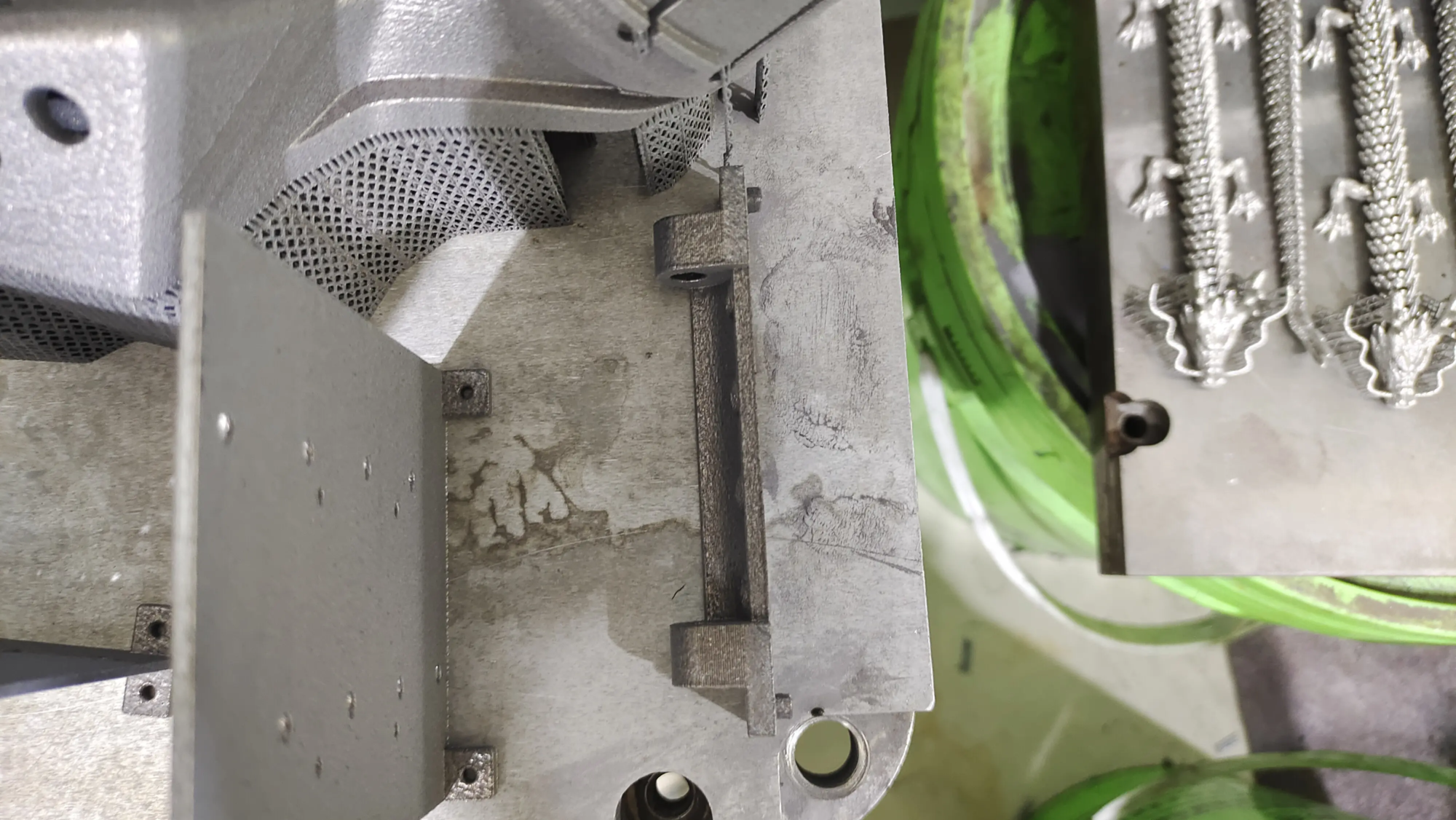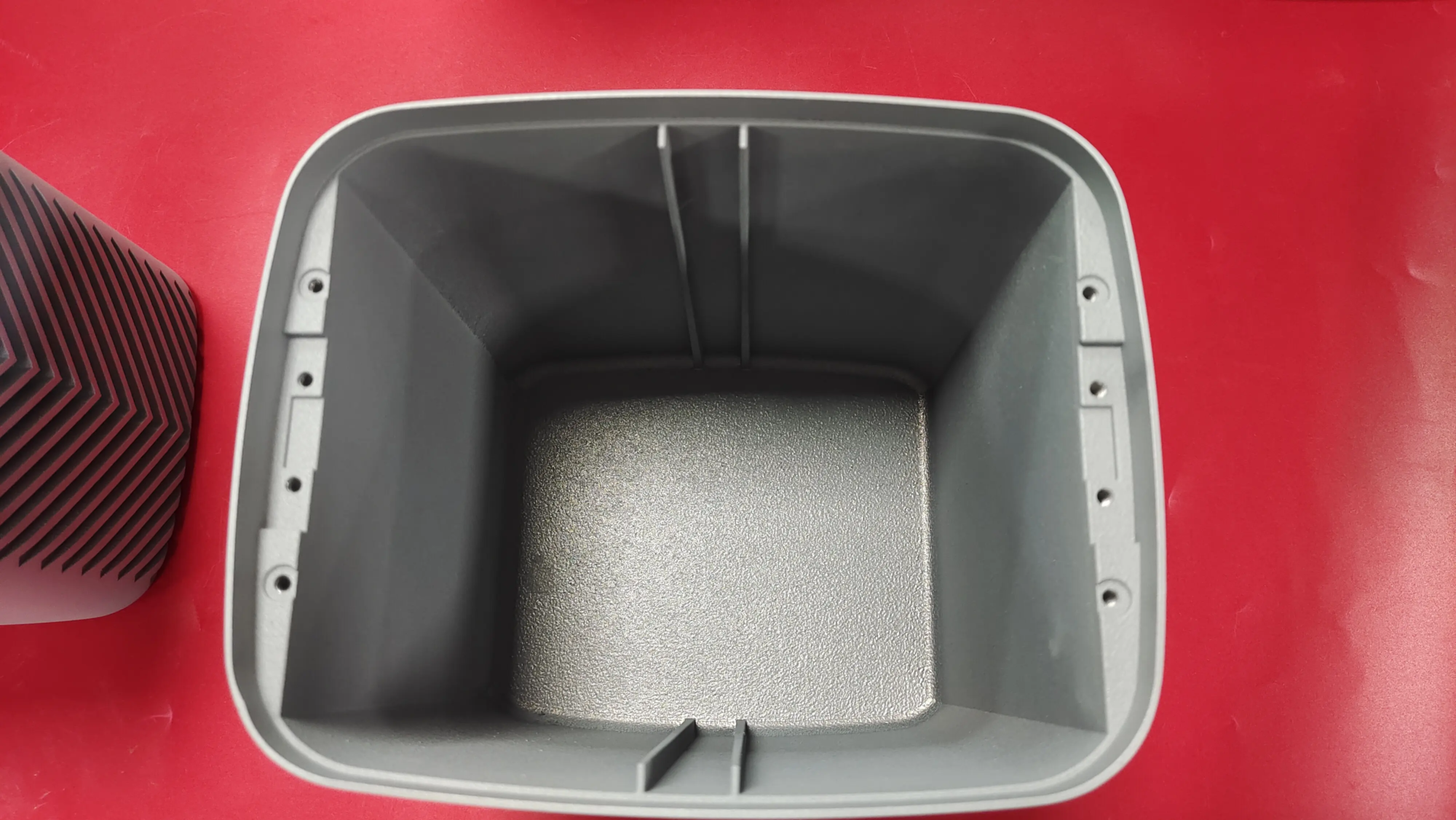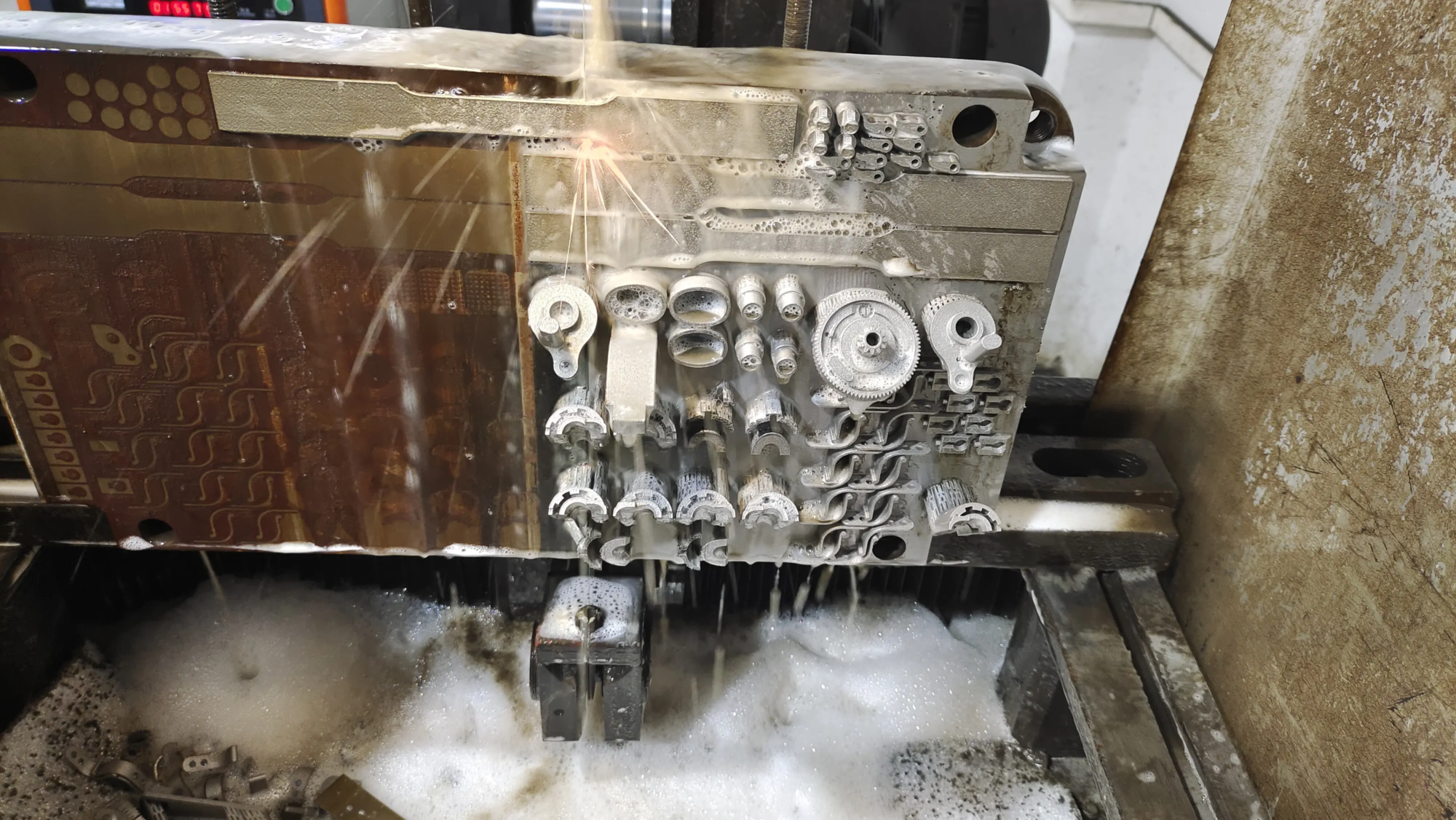Revolutionary Manufacturing: The Science and Art of LPS 3D Printing
Drive toward faster, smarter, more efficient manufacturing in ruthless drive Laser Powder Bed Fusion (LPS-Laser Powder Sintering/Melting) Stand at the forefront. LPS is often used interchangeably with terms such as SLM (selective laser melting) or DML (direct metal laser sintering), and LPS defines categories in additive manufacturing (AM), specifically targeting the creation of high-intensity, complex metal components directly from digital models, using lasers to create high-intensity metal components directly from digital models to fuse or melt high-metal functional layers through layers. LP is more than just a prototype tool, it can also reshape the industry, demanding unparalleled precision, geometric freedom and robust material performance.
For engineers and innovators, this is more than just additive manufacturing; it is an unlocking of the potential of next-generation design.
The core mechanics of LPS technology
At its core, LPS 3D printers operate in a carefully controlled environment, usually filled with inert gases such as argon or nitrogen to prevent oxidation:
- Recoat powder: Thin and precise metal powders (from stainless steel and titanium alloys to aluminum, nickel superalloys, tool steel and precious metals) are evenly laid on the build board.
- Laser Accuracy: A high-power laser beam directed by the 3D CAD data of the assembly selectively scans the powder layer. Depend on the material and expected results:
- Complete Melting (SLM): The laser completely melts the powder particles, fuses them together, and fuses them with the underlying layer to create a completely dense metallic section.
- Sintering (DML): The laser heats the powder particles to a point below the melting point, allowing them to fuse through solid diffusion (“sintering”).
- Fusion layer by layer: After scanning one layer, the build platform is lowered, the new powder layer is applied, and the laser scanning process is repeated. The sequence continues until the entire part is complete and encapsulated in the surrounding uninserted powder.
- Post-processing and deletion: After the construction is completed and cooled in the chamber, "cake" Deleted. Carefully recycle loose powder (usually for reuse) and extract cured parts or parts. This is where the transition to functional components really begins.
Why Limited is a game-changer: Key Advantages
- Unprecedented design freedom: LP violates traditional manufacturing restrictions. Complex geometric shapes – complex internal channels, lightweight rosary, organic shapes, consolidation components – become achievable, impossible by machining or casting, unlocking performance optimization. Think about minimizing airflow stents while maintaining strength or medical implants perfectly match bone structure.
- Rapid prototype and iteration: The digital nature of LPS can enable a rapid transition from design concept to physical parts. Engineers can quickly prototyping functional parts for verification tests, based on realistic feedback within a few days rather than weeks, which can greatly accelerate the development cycle.
- Complexity of no cost penalty: Unlike machining, complexity increases exponentially due to the complexity of tools and labor, while LPS is usually the same or minimized for highly complex parts, compared to simple parts. Complexity is "Free" During the core building process.
- Material properties: LP can handle a large number of high-performance industry-grade metals. This includes notorious materials that are difficult to process (such as inconel Superalloys) or bioprocess-resistant materials used in medical implants (such as TI6AL4V and COCR alloys). The parts exhibit mechanical properties that can be comparable to, and sometimes even exceed, conventionally manufactured equivalents.
- Low capacity production and customization: LPS is economically viable and can be used to produce small and medium-sized end-use parts or unique custom items (e.g., custom medical equipment, professional tools, aerospace components) without the need for expensive tools.
- Quality optimization and lightweight: The freedom to optimize topology can greatly reduce weight while meeting structural requirements, a key factor in aerospace, automotive and robotics technology. The lattice structure can be designed to absorb energy efficiently.
Bridging the digital physics gap: the role of expertise
The full potential of leveraging the LP is more than just flip the switch over the printer. It requires profound expertise across multiple fields:
- Design of Additive Manufacturing (DFAM): Engineers need to think differently – optimize geometry to minimize pressure distribution and minimize post-processing.
- Materials Science: In-depth understanding of metal powder characteristics, material behavior, phase change and heat treatment effects in rapid melting/cooling cycles.
- Process parameter optimization: Precise adjustments to laser power, scanning speed, hatch thickness and environmental control (air flow, oxygen level) for each specific material and geometry are critical to achieving density, surface finish and mechanical properties.
- Post-processing mastery: Metal LPS parts often require a wide range of finishes: support structure, heat treatment (stress relief, solution treatment and aging), CNC machining for critical dimensions, surface finishes (polishing, blasting), and potential hip joints (hot isometric pressing) to enhance density or fatigue life. Work with seamless service providers One-stop post-processing It is essential to effectively deliver production-ready parts.
GRESTLIGHT: Your Partner’s Accurate LPS 3D Printing Solution
exist GreatWe specifically target LPS technology to meet your complex challenges. We are not just operators; we are pioneers and problem solvers, focusing on rapid prototyping and the production of high-quality metal parts.
- Advanced SLM (LPS) features: Our state-of-the-art laser powder bed fusion equipment library provides the fidelity and control required for demanding applications.
- Professional problem solving: Our core mission is to solve your toughest rapid prototyping barriers and quickly transform complex designs into functional reality.
- Wide range of material versatility: We go beyond standard products. Most materials can be customized and processedmeet the professional needs of the aerospace, medical, automotive, industrial and R&D sectors.
- Integrated Postprocessing Suite: Eliminate bottlenecks. Our comprehensive service (support, machining, heat treatment, finishing) ensures that your LPS parts are ready. All of this is managed under one roof.
- Commitment to precision and value: It is said to be One of the major rapid prototype companies from ChinaGremplying combines technological excellence with a value-driven manufacturing industry. We provide customized precision parts at competitive speeds without compromising quality or turnover time.
in conclusion
LPS 3D printing is more than just a manufacturing process. This is the enabler of innovation. By dissolving the barriers of traditional manufacturing, it enables engineers to create sections with unprecedented complexity, performance and efficiency improvements. From the rapid functional prototypes that accelerate R&D to the generation of customized high-strength end-use components, LPS is essential.
But the journey from digital design to flawless metal parts depends heavily on expertise, advanced equipment, meticulous process control, and mastery of post-processing technology. Here, working with professional experts like Greatlight becomes key. We offer integrated solutions – cutting-edge LPS technology, deep material knowledge, effective custom handling and comprehensive completion – ensuring you leverage the true power of additive manufacturing to achieve your next breakthrough.
Ready to create a future with metal parts? Discover how Greatlight’s LPS expertise solves your rapid prototyping challenges and bring the most ambitious designs to life.
FAQ: LPS 3D Printing
1. What is the difference between LP, SLM and DML?
Although often used interchangeably in industry discourse, there are distinctions:
- LPS (Laser Powder Bed Fusion): A wide umbrella term is usually used where the powder is fused with laser on the bed. Sometimes it is particularly related to sintering.
- SLM (Selective Laser Melting): It implies that the laser completely melted the metal powder, forming a completely dense part (nearly 100% density). Mainly used in reaction metals such as titanium and aluminum.
- DML (Direct Metal Laser Sintering): Partial melting/fusion (sintering) was initially represented, but modern DMLS systems now generally implement full melting, resulting in completely dense parts similar to SLM. Common terms for some manufacturers (e.g. EOS).
In fact, these terms are often fused today to achieve high-density functional metal parts and providers use them based on brand preference or specific machine origins. The technical core (laser, powder bed, stratification) is consistent.
2. What materials can be used for LPS 3D printing?
A variety of metal alloys can be used, including:
- Stainless steel: 316L, 17-4ph, 15-5ph
- Tool Steel: H13, Maraging Steel (MS1)
- Titanium alloy: TI6AL4V (level 5 and 23), CP Titanium
- Aluminum alloy: Alsi10mg, Alsi7mg, ScalMalloy®
- Nickel-based superalloy: Inconel 718, Inconel 625, Hastelloy X
- Cobalt powder alloy: COCRMO (for medical/dental implants)
- Copper alloy: Pure copper, Cucrzr
- Precious Metals: Gold, silver, platinum.
Many providers, such as Greatlime, also offer material development/customization capabilities.
3. How accurate is LPS accuracy and dimensional accuracy?
LPS provides high accuracy and accuracy:
- Typical dimension accuracy: +/- 0.1% to +/- 0.3% (usually about +/- 0.1 mm).
- Layer thickness: Usually between 20 μm and 60 μm, details and relatively smooth surfaces can be distinguished well.
- However, accuracy depends on part of geometry, orientation, material and process parameters. Critical sizes usually require post-process processing.
4. What are the main limitations of LP?
The main challenges include:
- Build size: Limited by the printer’s room size (although large industrial systems exist).
- Surface finish: If the built surface has a characteristic roughness (RA ~10-25μm), it usually requires post-processing of smoothing applications.
- Support structure: The functionality of the dangling needs to be supported, must be designed, cost-added and needs to be removed, and may leave surface markings.
- Residual stress: Rapid melting and solidification can cause internal stress, requiring careful process control and heat treatment.
- Material powder cost: Metal powders may be much more expensive than bulk materials.
- Processing time: While complex parts are faster, batch processing can be long.
5. Records are suitable for end-use parts?
Absolutely. LPS (SLM/DML) is increasingly used in the final production parts, especially when component complexity, customization, performance or lightweight requirements are greater than the potential cost premium compared to casting or forging (such as casting or forging). Industry such as aerospace, medical, automotive and energy rely on components produced by LPS.
6. What post-processing is usually required?
Common LP post-processing steps include:
- Remove powder: Manually remove uninserted powder (emission).
- Demolition support structure: Cut or process support.
- Heat treatment: Stress relief, annealing, solution treatment and aging (to ensure the correct microstructure, eliminate stress, improve mechanical properties).
- Hot isostatic pressure (hook): Optional, but for critical aerospace/medical parts, internal voids can be closed and fatigue life can be extended.
- Processing: CNC machining for high-precision holes, wires and functional surfaces.
- Surface finish: Grind, polish, electropolish, grind, coat/anode to achieve the desired aesthetic, smoothness or specific functional characteristics.
7. How fast is the turnover time? What factors affect it?
Turnover times vary, but are much faster than routes based on traditional tools.
- complex: Simple parts are faster than highly complex dense structures.
- Establish height: Due to more layers, taller parts take longer to print.
- Batch packaging: How to arrange multiple parts in build volume.
- Post-processing requirements: Large processing or complex finishes add time.
- Priority Quick processingfocusing on effective workflows to quickly deliver high-quality prototype parts. Contact us for specific project estimates.
8. Why choose a service provider like Greatlight vs. Investing Equipment?
For many companies, cooperation is strategic:
- Capital Investment: The Industrial LPS system represents a significant financial investment.
- Operational overhead: Specialized facilities, trained personnel, material handling (including the safety of fine powders), maintenance and post-treatment infrastructure is required.
- Expertise: Gain in-depth DFAM knowledge, materials science understanding and process optimization expertise.
- Flexibility and scalability: Use capacity as needed without fixed overhead. Access to different materials/technology without investment. Companies like Greatlight offer economies of scale and a robust economy Post-processing completion serviceprovide a truly one-stop solution.





